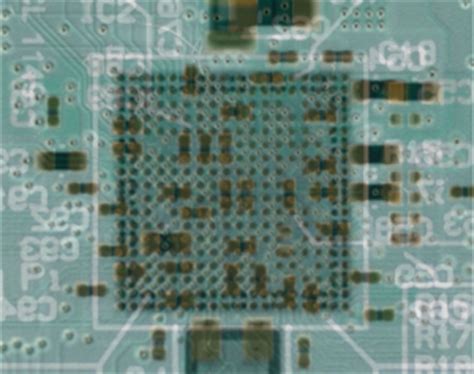What is the BCM2835?
The BCM2835 is a highly integrated SoC that combines a 32-bit ARM1176JZF-S processor core with a variety of peripherals and interfaces. It was designed to provide a cost-effective, energy-efficient, and high-performance solution for embedded applications, such as multimedia, networking, and IoT devices.
Key Features of the BCM2835
| Feature | Description |
|---|---|
| Processor Core | 32-bit ARM1176JZF-S running at up to 1 GHz |
| GPU | Videocore IV multimedia co-processor |
| Memory | 512 MB SDRAM (shared with GPU) |
| USB | 2 x USB 2.0 Host ports |
| Ethernet | 10/100 Mbps Ethernet controller |
| Display Interfaces | HDMI, Composite video, DSI |
| Camera Interface | MIPI CSI-2 interface for camera modules |
| Audio | I2S, SPDIF, and PWM audio interfaces |
| GPIO | 54 general-purpose I/O pins |
| Other Interfaces | SPI, I2C, UART, PCM/I2S |
BCM2835 Architecture
The BCM2835 architecture consists of several key components that work together to provide a comprehensive solution for embedded systems.
ARM1176JZF-S Processor Core
At the heart of the BCM2835 is the ARM1176JZF-S processor core, which is a 32-bit ARM11 family processor. This processor core features:
- Up to 1 GHz clock speed
- 32 KB Level 1 Instruction cache and 32 KB Level 1 Data cache
- 128 KB Level 2 cache
- SIMD (Single Instruction, Multiple Data) extensions for accelerated multimedia processing
- VFPv2 (Vector Floating-Point) coprocessor for improved floating-point performance
Videocore IV GPU
The BCM2835 also includes a powerful Videocore IV multimedia co-processor, which provides hardware acceleration for various multimedia tasks, such as:
- H.264 and MPEG-4 video decoding and encoding
- OpenGL ES 1.1 and 2.0 3D graphics rendering
- OpenVG 1.1 2D vector graphics rendering
- 1080p30 H.264 high-profile decode and 1080p30 H.264 high-profile encode
Memory and Storage
The BCM2835 features 512 MB of SDRAM, which is shared between the ARM processor and the Videocore IV GPU. This shared memory architecture allows for efficient data transfer between the processor and the GPU, enabling smooth multimedia performance.
In addition to the SDRAM, the BCM2835 also supports external storage through an SD card interface, allowing for the expansion of storage capacity.
Connectivity and Interfaces
The BCM2835 offers a wide range of connectivity options and interfaces, making it suitable for various applications:
- 2 x USB 2.0 Host ports for connecting peripherals
- 10/100 Mbps Ethernet controller for network connectivity
- HDMI, Composite video, and DSI display interfaces
- MIPI CSI-2 interface for connecting camera modules
- I2S, SPDIF, and PWM audio interfaces for audio input and output
- 54 general-purpose I/O (GPIO) pins for interfacing with external devices
- SPI, I2C, UART, and PCM/I2S interfaces for communication with sensors, actuators, and other peripherals
BCM2835 functionality and Applications
The BCM2835’s rich feature set and powerful processing capabilities make it suitable for a wide range of applications, including:
Multimedia and Entertainment
- High-definition video playback and streaming
- Digital signage and information displays
- Gaming consoles and arcade machines
- Media centers and set-top boxes
IoT and Embedded Systems
- Home automation and smart home devices
- Industrial control and monitoring systems
- Wearable technology and portable devices
- Robotics and autonomous vehicles
Education and Research
- STEM education and programming learning tools
- Scientific instrumentation and data acquisition
- Prototyping and proof-of-concept development

Raspberry Pi and the BCM2835
One of the most well-known applications of the BCM2835 is in the Raspberry Pi single-board computer. The Raspberry Pi has revolutionized the world of embedded systems and DIY Electronics by providing an affordable, accessible, and versatile platform for learning, experimentation, and product development.
The BCM2835 is the core component of the Raspberry Pi Models A, B, A+, and B+, as well as the Compute Module. Its powerful processing capabilities, multimedia features, and extensive connectivity options have enabled the Raspberry Pi to be used in countless projects and applications worldwide.
FAQ
-
Q: What is the difference between the BCM2835 and other Broadcom SoCs, such as the BCM2836 or BCM2837?
A: The main differences lie in the processor core and performance. The BCM2836 and BCM2837 feature quad-core ARM Cortex-A7 and ARM Cortex-A53 processors, respectively, offering improved performance compared to the single-core ARM1176JZF-S in the BCM2835. -
Q: Can the BCM2835 run operating systems other than Linux?
A: Yes, the BCM2835 can run various operating systems, including Linux distributions (e.g., Raspberry Pi OS), Android, and even Windows IoT Core. -
Q: Is the BCM2835 suitable for real-time applications?
A: While the BCM2835 is not specifically designed for real-time applications, it can be used in soft real-time scenarios with careful software design and optimization. -
Q: What is the maximum resolution supported by the BCM2835’s video outputs?
A: The BCM2835 can support up to 1920×1080 (1080p) resolution through its HDMI output and up to 640×480 (480p) through the Composite video output. -
Q: Can the BCM2835 be used in commercial products?
A: Yes, the BCM2835 can be used in commercial products. However, it is essential to consider factors such as licensing, support, and long-term availability when using the BCM2835 in a commercial setting.
In conclusion, the BCM2835 is a powerful and versatile SoC that has enabled the creation of countless innovative projects and products, most notably the Raspberry Pi. Its extensive features, processing capabilities, and connectivity options make it an ideal choice for a wide range of embedded applications, from multimedia and entertainment to IoT and industrial control systems. As the embedded systems landscape continues to evolve, the BCM2835 remains a key player, offering a foundation for innovation and creativity in the world of electronics.

No responses yet